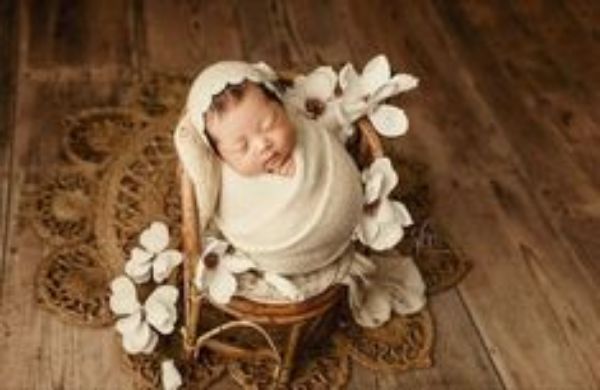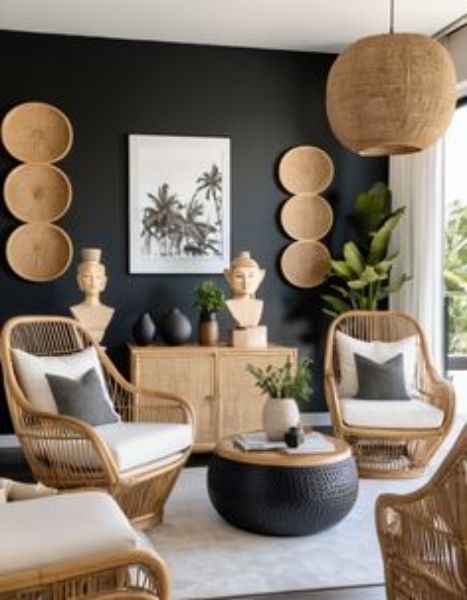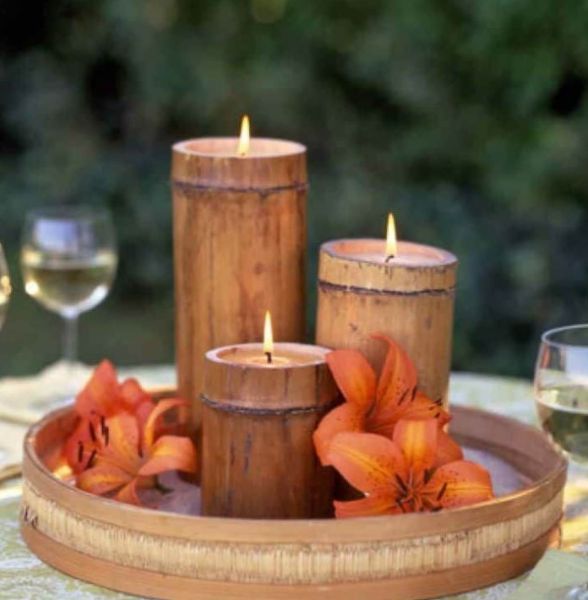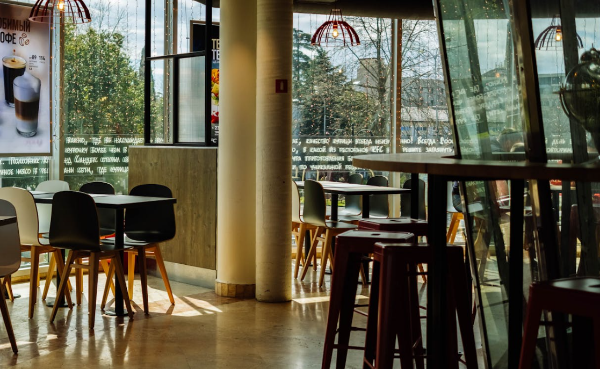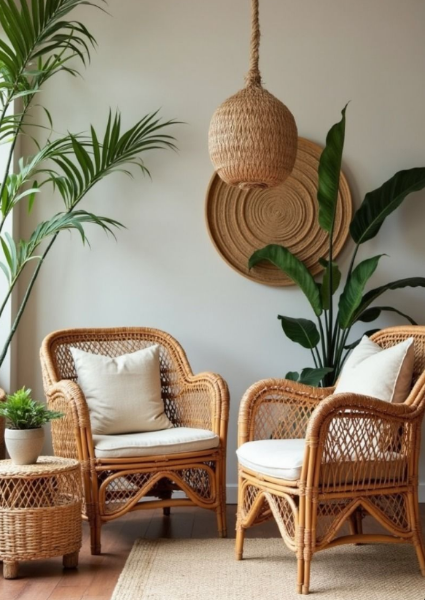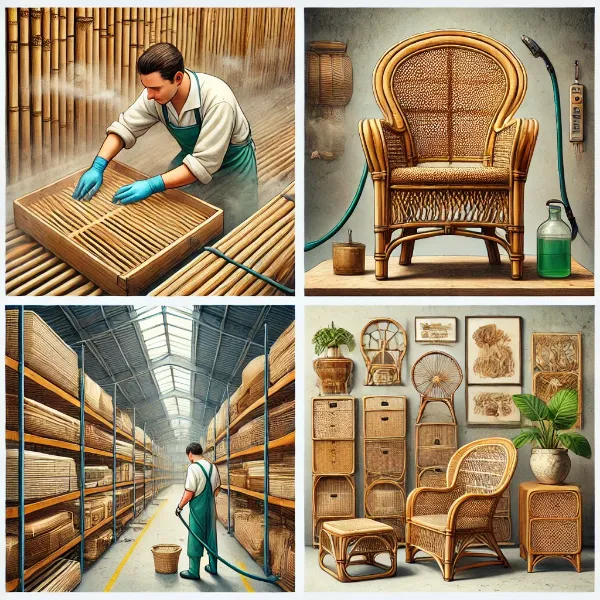In the ever-evolving world of interior design, the conversation has shifted dramatically from purely aesthetic considerations to a more holistic approach that encompasses sustainability, functionality, and cultural significance. Home design today is no longer just about creating visually appealing spaces; it's about crafting environments that tell a story, support our wellbeing, and reflect our commitment to the planet. Among the materials that perfectly embody this evolution, bamboo and rattan stand tall as timeless champions of sustainable luxury.
The resurgence of natural materials in modern home design isn't merely a passing trend—it represents a profound reconnection with traditions that span centuries and continents. From the elegant bamboo furnishings of ancient Chinese dynasties to the intricate rattan weaving techniques passed down through generations in Southeast Asia, these versatile materials have transcended time to find their rightful place in contemporary homes worldwide.
As we navigate the complexities of 21st-century living, with increasing awareness of environmental challenges and a growing desire for authenticity in our surroundings, bamboo and rattan offer compelling solutions that marry form and function in extraordinary ways. This exploration into the world of sustainable home design will reveal how these remarkable natural resources are revolutionizing interior spaces, presenting alternatives that are as kind to the planet as they are pleasing to the eye.
Join us as we unravel the profound importance of thoughtful home design through the lens of bamboo and rattan—materials that remind us that true beauty in our living spaces comes not just from what we see, but from the stories, values, and intentions woven into every element of our homes.
The Renaissance of Natural Materials
Historical Significance of Bamboo and Rattan
The relationship between humans and natural materials like bamboo and rattan stretches back thousands of years, forming an integral part of cultural heritage across Asia, Africa, and beyond. Archaeological evidence suggests bamboo was used in China as early as 7,000 years ago, while rattan furnishings appear in ancient Egyptian tombs dating to 1400 BCE.
In traditional Asian societies, bamboo symbolized resilience, integrity, and elegance—qualities that influenced not just furniture design but philosophy, art, and literature. The material's remarkable combination of strength and flexibility inspired countless craftspeople to develop sophisticated joinery techniques and intricate designs that required no nails or glue.
Rattan, with its extraordinary pliability and durability, became the foundation for weaving traditions that defined domestic life across Southeast Asia. From Philippines to Indonesia, craftspeople developed distinctive regional styles, creating everything from everyday household items to ceremonial furniture reserved for nobility.
The Modern Revival
After decades of being overshadowed by industrial materials like plastic, steel, and synthetic fabrics, bamboo and rattan are experiencing a global renaissance for several compelling reasons:
- Environmental Consciousness: As climate change concerns intensify, consumers increasingly seek materials with minimal ecological impact.
- Biophilic Design Movement: Research confirming the psychological benefits of connecting with nature has spurred interest in organic materials that bring natural elements indoors.
- Appreciation for Craftsmanship: The reaction against mass-produced, disposable furnishings has revitalized interest in artisanal traditions and handcrafted pieces.
- Global Design Fusion: Contemporary designers blend traditional techniques with modern aesthetics, creating pieces that honor cultural heritage while fitting seamlessly into today's homes.
- Material Innovation: Technological advances have expanded the possibilities for bamboo and rattan, from engineered bamboo flooring to innovative composite materials.
Today's revival isn't merely nostalgic—it represents a forward-thinking approach that recognizes how these ancient materials address modern concerns about sustainability, wellness, and authentic living environments.
The Remarkable Versatility of Bamboo
Nature's Engineering Marvel
Bamboo stands as one of nature's most extraordinary architectural achievements. This remarkable grass (not a tree, as many assume) grows faster than any other plant on Earth—some species shoot up at rates exceeding 91 cm (36 inches) in a single day. This rapid growth translates to incredible sustainability, as bamboo forests can be harvested every 3-5 years without damage to the ecosystem, compared to hardwood forests that require decades to regenerate.
The structural properties of bamboo are equally impressive. Its hollow, compartmentalized stem combines lightweight characteristics with tensile strength comparable to steel. This natural engineering makes bamboo simultaneously rigid and flexible—capable of bending without breaking during typhoons and earthquakes in its native habitats.
Bamboo in Contemporary Home Design
In today's design landscape, bamboo's versatility manifests across virtually every aspect of home interiors:
Structural Elements
- Flooring: Engineered bamboo flooring offers hardwood aesthetics with superior durability and moisture resistance.
- Wall Coverings: Bamboo panels and wallpapers provide texture and warmth while improving acoustic properties.
- Architectural Accents: Exposed bamboo beams and screens create distinctive architectural features that define spaces.
Furniture Applications
- Seating: From minimalist dining chairs to elaborate lounge furniture, bamboo creates pieces that are both lightweight and sturdy.
- Tables: Bamboo tables range from rustic designs highlighting the material's natural character to sleek, modern interpretations.
- Storage Solutions: Bamboo cabinetry and shelving units combine practical storage with visual lightness.
Decorative Elements
- Lighting: Bamboo's translucent qualities make it ideal for creating diffused, warm illumination in pendant lamps and floor fixtures.
- Window Treatments: Bamboo blinds and shutters filter light beautifully while providing privacy and insulation.
- Accessories: Smaller items like bamboo trays, mirrors, and decorative objects add organic touch points throughout a space.
Innovation Beyond Tradition
Contemporary applications of bamboo extend far beyond traditional techniques, with modern manufacturing processes creating new possibilities:
- Bamboo Textiles: Fabrics derived from bamboo fibers offer exceptional softness for bedding, upholstery, and window treatments, along with natural antibacterial properties.
- Laminated Bamboo: Through processes that compress strips of bamboo with adhesives, manufacturers create solid panels used for furniture, countertops, and decorative elements with exceptional dimensional stability.
- Bamboo Composites: Combining bamboo fibers with resins produces materials suitable for outdoor furniture and architectural elements that resist weathering and insects.
These innovations have dramatically expanded bamboo's role in contemporary interiors, positioning it as a sophisticated alternative to conventional materials rather than merely an exotic accent.
The Enduring Appeal of Rattan
Understanding Rattan's Unique Properties
While often confused with bamboo, rattan represents a distinct botanical category with its own remarkable characteristics. Unlike bamboo's hollow structure, rattan is a solid-core climbing palm that grows in the tropical forests of Southeast Asia, Africa, and Australasia. Its exceptional flexibility comes from its long, rope-like growth pattern as it winds through forest canopies seeking sunlight.
Rattan's unique combination of lightness, exceptional tensile strength, and extraordinary pliability makes it ideally suited for furniture construction. These natural properties allow artisans to create curved forms that would be impossible or prohibitively expensive with other materials.
The porous surface of rattan also accepts stains and paints beautifully, enabling a vast range of finishing options from natural honey tones to vibrant colors that complement any interior palette.
Rattan's Design Versatility
Classic Rattan Furniture
Traditional rattan furniture techniques produce pieces with timeless appeal that transcend design trends:
- Peacock Chairs: The iconic fan-backed chair design that originated in the Philippines became a global symbol of bohemian luxury.
- Colonial Styles: Rattan furniture from the colonial era blends European forms with tropical materials, creating pieces that work equally well in contemporary or traditional settings.
- Bentwood Designs: The natural flexibility of rattan allows for graceful curved elements that create both visual interest and ergonomic comfort.
Contemporary Rattan Applications
Today's designers are reimagining rattan in exciting ways that challenge traditional perceptions:
- Minimalist Interpretations: Clean-lined rattan furniture strips away ornate details to highlight the material's natural beauty and structural integrity.
- Indoor-Outdoor Living: Weather-resistant treatments have expanded rattan's presence in transitional spaces like covered patios and sunrooms.
- Sculptural Statements: Forward-thinking designers create dramatic architectural pieces that elevate rattan from functional furniture to artistic expression.
Decorative Accents
Beyond furniture, rattan adds texture and visual interest through numerous small-scale applications:
- Lighting Fixtures: The filtered light quality through woven rattan creates atmospheric illumination perfect for creating ambiance.
- Mirrors and Frames: Rattan wrapping techniques add organic texture to mirrors and artwork frames.
- Storage Baskets: Practical and beautiful, rattan baskets bring organized storage with natural warmth.
- Room Dividers: Rattan screens provide flexible space division while maintaining airflow and visual connection.
Cultural Significance and Craftsmanship
What distinguishes rattan furniture from many other categories is its deep connection to artisanal traditions. Each major rattan-producing region has developed distinctive weaving patterns and construction techniques that reflect local cultural identities:
- Indonesian Designs: Often feature tight, geometric weaving patterns and sophisticated joinery that allows pieces to be assembled without hardware.
- Filipino Craftsmanship: Renowned for elaborate decorative elements and the integration of other natural materials like seagrass and abaca.
- Thai Techniques: Typically emphasize the natural variations in rattan color and diameter as design elements rather than trying to achieve uniformity.
This cultural diversity means that incorporating rattan into home design can connect spaces to specific traditions and narratives, adding layers of meaning beyond pure aesthetics.
Sustainability Credentials: Why Bamboo and Rattan Matter
Environmental Impact Comparison
In an era where environmental considerations increasingly drive consumer choices, bamboo and rattan stand out as exceptionally responsible material options:
Renewable Resource Management
- Growth Rate: Bamboo's extraordinary growth speed (some species grow over 3 feet daily) means it can be harvested every 3-5 years, compared to 25-50 years for most timber species.
- Harvest Practices: Both bamboo and rattan can be harvested without killing the parent plant, allowing continuous regrowth from the same root system.
- Land Efficiency: Bamboo produces approximately 35% more oxygen than equivalent tree stands and absorbs up to 12 tons of carbon dioxide per hectare.
Manufacturing Footprint
- Energy Requirements: Processing bamboo and rattan typically requires significantly less energy than manufacturing synthetic alternatives or processing hardwoods.
- Chemical Inputs: While some bamboo processing methods do use chemicals, many manufacturers now employ closed-loop systems that minimize environmental impact.
- Transportation: The lightweight nature of these materials reduces shipping-related carbon emissions compared to heavier alternatives like stone or metal.
End-of-Life Considerations
- Biodegradability: Unlike plastic furniture that may persist for centuries in landfills, bamboo and rattan naturally decompose at the end of their useful life.
- Upcycling Potential: Both materials lend themselves to repair and repurposing, extending their functional lifespan.
- Non-Toxic Disposal: When properly sourced and finished, these materials don't leach harmful substances into soil or water systems when discarded.
Certification Standards to Look For
Informed consumers should seek products with credible certifications that verify environmental and social responsibility:
- Forest Stewardship Council (FSC): Ensures bamboo and rattan are harvested from responsibly managed sources.
- OEKO-TEX Standard 100: Important for bamboo textiles, confirming they're free from harmful substances.
- Global Organic Textile Standard (GOTS): Relevant for bamboo fabrics marketed as organic.
- Fair Trade Certification: Verifies artisans and workers receive fair compensation and work under safe conditions.
- Cradle to Cradle: Recognizes products designed for circular economy principles.
These certifications help distinguish genuinely sustainable products from those merely utilizing "greenwashing" marketing tactics.
Supporting Traditional Communities
Beyond environmental benefits, choosing bamboo and rattan products often provides direct economic support to communities that have worked with these materials for generations:
- In Indonesia, over 1.2 million people depend directly or indirectly on the rattan sector for their livelihoods.
- Similar numbers apply across the Philippines, Vietnam, Malaysia, and other producing regions.
- Purchasing from ethical sources helps preserve cultural knowledge and traditional craft techniques that might otherwise disappear in the face of industrialization.
This social dimension adds another layer of meaning to sustainable home design choices, connecting global consumers to artisans through beautiful, functional objects that carry human stories.
Functional Benefits Beyond Sustainability
Climate-Responsive Properties
Beyond their environmental credentials, bamboo and rattan offer practical advantages that enhance comfort and livability in diverse climates:
Natural Insulation
- Bamboo's hollow structure creates natural air pockets that provide thermal insulation.
- This property makes bamboo flooring naturally warmer to the touch than tile or stone in cool climates.
- In hot regions, both materials remain relatively cool compared to metals or synthetic alternatives.
Humidity Management
- Both bamboo and rattan naturally absorb and release moisture, helping to balance indoor humidity levels.
- This characteristic makes them particularly well-suited to coastal and tropical environments where humidity fluctuations can damage less adaptive materials.
- Their dimensional stability when properly finished prevents the warping and cracking common with many hardwoods in variable humidity conditions.
Airflow Optimization
- The open weave patterns typical of rattan furniture promote air circulation, enhancing comfort in warm climates.
- This breathability makes rattan especially appropriate for bedrooms and sitting areas where temperature regulation affects comfort.
Ergonomic Advantages
The physical properties of these materials translate to tangible comfort benefits:
Natural Flexibility
- Rattan's inherent "give" provides subtle flexibility that makes seating more comfortable than rigid alternatives.
- This modest flexion reduces pressure points during extended sitting, particularly beneficial for dining chairs and office seating.
- The slight spring in bamboo flooring reduces fatigue compared to concrete or tile when standing for extended periods.
Lightweight Practicality
- The exceptional strength-to-weight ratio of both materials creates furniture that's easily moved for cleaning or reconfiguring spaces.
- This mobility particularly benefits older adults, people with physical limitations, or those who frequently rearrange their living environments.
Tactile Comfort
- The natural warmth and texture of bamboo and rattan create pleasant tactile experiences compared to synthetic or metal alternatives.
- This sensory quality contributes significantly to the psychological comfort of living spaces.
Acoustic Benefits
Often overlooked in material selection, the acoustic properties of bamboo and rattan can significantly improve the auditory environment:
- The complex surfaces of woven rattan diffuse sound waves, reducing echo and reverberation in large or hard-surfaced rooms.
- Bamboo's cellular structure absorbs sound more effectively than many solid materials, helping to dampen noise transmission between spaces.
- In open-plan homes, rattan screens and dividers can create acoustic zoning while maintaining visual connectivity.
These functional characteristics explain why these materials have endured in hot, humid climates for centuries before air conditioning—and why they continue to offer relevant benefits in contemporary homes worldwide.
Incorporating Bamboo and Rattan: Design Approaches
Contemporary Minimalism
For those drawn to clean lines and uncluttered spaces, bamboo and rattan offer sophisticated options that align perfectly with minimalist principles:
Material Honesty
- The visible grain and natural variations in bamboo create visual interest without overwhelming simplicity.
- Unfinished or lightly finished materials celebrate authenticity—a core value in minimalist design.
- The structural efficiency of both materials (maximum strength with minimum material) embodies the "less is more" philosophy.
Visual Lightness
- The slender proportions possible with these strong yet lightweight materials prevent the heavy, bulky appearance that can make spaces feel smaller.
- Open weaves and negative space in rattan designs maintain visual flow and airiness.
- Light-colored finishes further enhance spatial perception.
Thoughtful Integration
- Consider bamboo flooring as a neutral foundation that adds subtle texture without competing with other elements.
- Select rattan pieces with simple forms that highlight craftsmanship rather than elaborate detailing.
- Incorporate bamboo wall panels or ceiling treatments to add architectural interest without decoration.
Bohemian Eclecticism
For more expressive, layered interiors that celebrate global influences:
Signature Pieces
- A dramatic peacock chair or hanging rattan egg chair creates an instant focal point.
- Vintage rattan pieces bring authentic character and historical resonance.
- Mix rattan styles from different cultures for personalized, collected-over-time ambiance.
Textural Contrasts
- Layer rattan's open weaves against rich textiles like velvet, silk, or global fabrics.
- Combine smooth bamboo surfaces with nubby natural fibers like jute, wool, or cotton.
- Place lightweight rattan elements against substantial architectural features for balance.
Natural Palette Enhancement
- Use honey-toned rattan to warm minimalist white and gray palettes.
- Incorporate black-stained bamboo for dramatic contrast in neutral schemes.
- Pair natural finishes with botanical greens, terracotta, and indigo for a cohesive earth-inspired palette.
Tropical Modernism
This sophisticated approach blends modernist principles with tropical materials:
Architectural Integration
- Use bamboo screens as architectural elements to filter light and create semi-private zones.
- Install engineered bamboo ceiling treatments for unexpected visual interest.
- Consider split bamboo wall coverings to add texture to feature walls.
Indoor-Outdoor Harmony
- Select rattan pieces that transition seamlessly between interior and covered exterior spaces.
- Use similar materials in adjacent indoor and outdoor areas to visually expand living space.
- Incorporate planters and greenery with bamboo elements to reinforce biophilic connections.
Restraint and Curation
- Avoid thematic excess—sophisticated tropical modernism uses natural materials with restraint.
- Balance organic materials with sleek, contemporary elements like glass and stone.
- Edit carefully to prevent visual clutter while maintaining warmth and character.
Scandinavian Hybrid
The surprising affinity between Scandinavian design principles and natural Asian materials creates compelling fusion possibilities:
Shared Values
- Both traditions emphasize craftsmanship, functional beauty, and material respect.
- Light finishes common to both aesthetics create bright, uplifting environments.
- The common thread of simplicity creates natural harmony between these distinct traditions.
Implementation Strategies
- Pair blonde bamboo with pale woods typical of Nordic interiors.
- Introduce rattan's texture into otherwise minimal Nordic spaces for warmth.
- Use bamboo accent pieces to bring subtle organic elements into predominantly Scandinavian schemes.
Practical Considerations: Selection and Care
Quality Assessment Guidelines
Investing in quality bamboo and rattan ensures longevity and satisfaction. Here's what to evaluate:
Bamboo Quality Indicators
- Maturity at Harvest: Products made from bamboo harvested at 5-7 years (full maturity) offer optimal strength.
- Node Spacing: Evenly-spaced nodes generally indicate better quality material.
- Color Consistency: Natural variations should be present but relatively uniform throughout a piece.
- Joint Construction: Quality bamboo furniture features precise joinery with minimal gaps.
- Surface Finish: Smooth, splinter-free surfaces with even finish application indicate careful production.
Rattan Quality Considerations
- Core Materials: High-quality rattan furniture uses solid cores for structural components rather than just decorative outer wrapping.
- Weave Tightness: Examine for consistent tension and pattern regularity in woven sections.
- Binding Security: Check that wrapped joints remain tight with no loose ends.
- Frame Construction: Quality pieces feature reinforced stress points and thoughtful structural design.
- Weight and Rigidity: Better rattan pieces feel substantial and remain stable when pressure is applied to various points.
Appropriate Placement Recommendations
Strategic placement maximizes the lifespan and appearance of these natural materials:
Climate Considerations
- Direct Sunlight: Limit prolonged exposure to prevent color fading and material drying.
- Humidity Levels: While adaptable to various humidity levels, extreme dryness can cause cracking.
- Temperature Fluctuations: Avoid placing pieces near heating vents, fireplaces, or air conditioning units.
- Outdoor Exposure: Unless specifically designed and treated for full weather exposure, keep rattan under covered areas outdoors.
Room-Specific Recommendations
- Living Areas: Both materials excel in main living spaces where their acoustic and tactile benefits enhance comfort.
- Bedrooms: The lightweight nature of rattan makes it practical for bedrooms where furniture might be moved frequently.
- Kitchens: Consider bamboo for flooring, countertops, and accessories, but be aware that untreated rattan may absorb cooking odors.
- Bathrooms: Engineered bamboo with proper sealing works well; traditional rattan generally isn't suitable for high-moisture bathrooms.
- Sunrooms: Both materials thrive in bright, indoor-outdoor transition spaces with stable temperatures.
Maintenance Best Practices
Proper care significantly extends the useful life of bamboo and rattan furnishings:
Routine Care
- Dusting: Regular dusting with a soft cloth prevents buildup in woven sections.
- Vacuum Cleaning: Use brush attachments on low power to clean crevices in woven rattan.
- Spot Cleaning: Wipe spills immediately with a damp cloth, avoiding soaking the material.
- Humidity Management: In extremely dry environments, occasional misting helps prevent cracking.
Preventative Measures
- Rotation: Periodically rotate items to ensure even exposure to light and use.
- Protective Pads: Use felt pads under bamboo items to prevent scratching surfaces underneath.
- Coasters and Mats: Protect bamboo surfaces from water rings and heat damage.
- Seasonal Inspection: Check for loose wrappings or joints and address minor issues before they worsen.
Rejuvenation Techniques
- Bamboo Refreshing: Apply food-grade mineral oil or specialized bamboo oil annually to replenish natural moisture.
- Rattan Restoration: Use a mixture of lemon oil and water (1:4 ratio) to clean and rehydrate dried rattan.
- Refinishing Options: Consider professional refinishing for valuable pieces showing significant wear.
- Repair Approaches: Minor breaks in rattan can often be repaired with specialized rattan reed available from craft suppliers.
With proper selection, placement, and maintenance, quality bamboo and rattan pieces become long-term investments rather than temporary decorative elements.
Global Design Inspirations
Asian Influences and Adaptations
The richest traditions of bamboo and rattan craftsmanship originate across Asia, offering abundant design inspiration:
Japanese Minimalism
- Bamboo Screens (Sudare): Traditional roll-up screens that filter light while maintaining privacy.
- Tatami Room Integration: Bamboo elements that complement the clean simplicity of tatami spaces.
- Ikebana Containers: Bamboo vessels that embody wabi-sabi appreciation for natural imperfection.
Chinese Classical Approaches
- Scholar's Furniture: Elegant bamboo desks, bookcases, and brush holders from the literati tradition.
- Bamboo Carving: Intricate decorative objects showcasing technical virtuosity and cultural symbolism.
- Garden Pavilion Elements: Architectural bamboo features that blur indoor-outdoor boundaries.
Southeast Asian Techniques
- Philippine Solihiya Weaving: The distinctive tight diagonal weaving pattern that adds visual texture.
- Indonesian Lamination: Methods that compress bamboo strips into solid forms for contemporary applications.
- Thai Split-Bamboo Screens: Flattened bamboo techniques that create seamless surface treatments.
Mediterranean and Colonial Adaptations
The global spread of rattan through trade and colonization created fascinating hybrid forms:
Colonial British Influences
- Plantation Chairs: The distinctive reclined form with extended arms designed for tropical relaxation.
- Campaign Furniture: Collapsible rattan pieces designed for colonial mobility.
- Anglo-Indian Fusion: Rattan adaptations of European forms with Indian decorative elements.
Mediterranean Interpretations
- Riviera Seating: The iconic bistro chairs that have defined café culture since the early 20th century.
- Spanish Colonial Revival: Rattan elements that complement arched doorways and textured stucco.
- Italian Summer House Style: Light, airy rattan arrangements for seasonal coastal homes.
Contemporary Global Fusion
Today's designers create exciting new contexts for these traditional materials:
Scandinavian-Asian Fusion
- Light Minimalism: Pale bamboo combined with pristine Nordic simplicity.
- Functional Sculpture: Rattan forms that double as practical furniture and artistic statements.
- Textile Integration: Woven rattan paired with Scandinavian textiles for textural contrast.
Tropical Modernism
- Architectural Applications: Structural bamboo elements in contemporary buildings.
- Resort-Inspired Residential Design: Bringing hospitality comfort cues into everyday living spaces.
- Indoor-Outdoor Integration: Seamless transitions using consistent materials across thresholds.
Industrial Contrast
- Raw Material Juxtapositions: Natural rattan paired with concrete, steel, and glass.
- Adaptive Reuse Projects: Warming industrial spaces with organic material interventions.
- Tech-Craft Balance: Balancing digital life with tangible, handcrafted elements.
DIY and Customization Opportunities
Beginner-Friendly Projects
Even those with limited crafting experience can personalize their spaces with these adaptable materials:
Simple Transformations
- Rattan Wrapping: Applying pre-woven rattan caning to plain furniture fronts or panels.
- Bamboo Frame Updates: Covering existing photo or mirror frames with bamboo reeds.
- Basket Repurposing: Converting rattan baskets into pendant light fixtures with simple electrical kits.
Painting and Finishing
- Chalk Paint Applications: Using low-VOC chalk paints to transform vintage rattan pieces.
- Ombré Effects: Creating graduated color fades on bamboo room dividers or wall hangings.
- Two-Tone Treatments: Dipping the lower portions of bamboo items in contrasting colors.
Assembly Projects
- Bamboo Plant Stands: Constructing simple elevated platforms from bamboo poles and joints.
- Rattan Headboards: Creating bedroom focal points with ready-made rattan panels.
- Window Treatments: Installing pre-made bamboo blinds with custom decorative elements added.
Advanced Customization Techniques
For those with more developed skills, these materials offer rich creative possibilities:
Structural Projects
- Custom Room Dividers: Engineering flexible bamboo screens with specialized joinery.
- Built-In Features: Integrating bamboo elements into permanent architectural features.
- Furniture Design: Creating original seating and tables using rattan binding techniques.
Surface Applications
- Split Bamboo Veneering: Applying thin bamboo sections to existing furniture surfaces.
- Pattern Creation: Developing personalized weaving patterns for chair backs or cabinet fronts.
- Layered Effects: Combining rattan weaving with other materials like leather or metal for unique textural compositions.
Restoration Skills
- Rattan Reweaving: Learning to replace damaged sections of vintage rattan furniture.
- Traditional Joinery: Mastering Asian bamboo joinery techniques for furniture repair or creation.
- Finish Restoration: Developing expertise in renewing aged patinas on bamboo and rattan.
Sourcing Materials for DIY
Finding quality materials is essential for successful projects:
Specialized Suppliers
- Craft Rattan: Smaller diameter rattan specifically prepared for DIY projects.
- Bamboo Poles: Various diameters and treatments for structural and decorative applications.
- Binding Materials: Traditional and contemporary options for secure joinery.
Sustainable Sourcing Considerations
- Certification Verification: Confirming responsible harvesting through documentation.
- Local Options: Exploring domestic bamboo species grown in non-invasive plantations.
- Reclaimed Sources: Utilizing materials from deconstruction projects or damaged items.
Tools and Equipment
- Essential Tools: Basic needs include sharp pruning shears, fine-tooth saws, and specialized awls.
- Steaming Equipment: Simple setups for making rattan pliable for bending and weaving.
- Finishing Supplies: Natural oils, waxes, and low-VOC sealants appropriate for these materials.
DIY engagement with these materials connects homeowners to ancient craft traditions while creating uniquely personal elements for their living spaces.
Expert Insights: Designer Perspectives
Interviews with Leading Bamboo and Rattan Designers
Sofia Chen, Sustainable Furniture Designer
"What fascinates me about bamboo is its paradoxical nature—it's simultaneously one of the oldest building materials and one of the most future-forward. Its carbon sequestration capacity is unmatched, and its tensile properties allow designs that would be impossible with conventional materials. I believe bamboo will play a crucial role in our transition to truly sustainable design systems."
Marcus Rajapakse, Contemporary Rattan Specialist
"The renaissance of rattan represents more than aesthetic preference—it signals a deeper shift in consumer values. People increasingly want to understand the human story behind their furnishings. When I bring clients to meet our artisans in rural Indonesia, they're transformed by witnessing the incredible skill involved in creating even simple pieces. That connection becomes embedded in their relationship with their home."
Amara Wong, Architectural Bamboo Expert
"We're just beginning to understand bamboo's architectural potential through engineered applications. The laminated bamboo we're developing achieves structural properties that rival steel in specific contexts, but with a fraction of the embodied energy. The aesthetic bonus is the visual warmth that no metal can provide—creating spaces that feel both cutting-edge and deeply human."
Design Tips from Industry Leaders
Material Selection Advice
- Appropriate Applications: "Assess each space individually rather than applying bamboo and rattan universally throughout a home. Their strategic use creates more impact than ubiquity." —Jean Monteiro, Interior Architect
- Quality Evaluation: "Invest in core pieces from established workshops rather than spreading your budget across multiple lower-quality items. Quality craftsmanship becomes more beautiful with age." —Kieran Phillips, Heritage Design Specialist
- Authenticity Considerations: "Seek pieces that honestly express their materials rather than those trying to imitate other substances or styles. Bamboo pretending to be something else misses the point of its inherent beauty." —Lara Deschamps, Materials Consultant
Integration Strategies
- Balance and Restraint: "The mistake I often see is overdoing these materials. They work best when balanced with complementary elements—think of them as essential notes in a composition, not the entire melody." —Thomas Wei, Spatial Designer
- Contextual Sensitivity: "Consider cultural context when selecting pieces. A peacock chair carries different connotations than a French colonial rattan settee. Be intentional about the narratives your choices reference." —Priya Agarwal, Cultural Design Consultant
- Scale Considerations: "Pay attention to visual weight—rattan's open weave allows it to occupy space without overwhelming it, making it perfect for smaller rooms where solid pieces would feel constrictive." —Miguel Sánchez, Small Space Specialist
The Future of Bamboo and Rattan in Home Design
Emerging Innovations
The evolution of these traditional materials continues through technological advancement and creative reimagining:
Material Science Developments
- Bamboo Carbon Fiber: Experimental processes extracting bamboo fiber for high-performance composite materials.
- 3D-Printed Rattan Structures: Digital fabrication techniques applying traditional weaving patterns to new forms.
- Bamboo Textile Expansion: Advanced processing creating fabrics with enhanced performance characteristics.
- Acoustic Optimization: Engineered bamboo panels designed specifically for sound diffusion and absorption in home theaters and music rooms.
Manufacturing Advances
- Precision Joinery: Computer-controlled cutting that enables complex bamboo connections without metal fasteners.
- Curved Lamination: Heat and pressure techniques creating fluid, organic forms from engineered bamboo.
- Zero-Waste Processing: Closed-loop systems utilizing every part of the bamboo plant, from culm to leaves.
- Colorfast Natural Dyes: Sustainable coloration processes that maintain environmental benefits.
Design Evolution
- Modular Systems: Component-based furniture allowing reconfiguration and adaptation to changing needs.
- Multi-Functional Applications: Pieces serving multiple purposes to maximize utility in compact living spaces.
- Smart Integration: Incorporating technological elements while maintaining natural aesthetic values.
- Biomimicry Approaches: Designs inspired by bamboo's natural structural efficiency and rattan's flexibility.
Market Trends and Forecasts
Industry analysis reveals significant growth and evolution in the bamboo and rattan sectors:
Consumer Behavior Shifts
- Growing Preference for Verified Sustainability: Increasing demand for certification and supply chain transparency.
- Investment Mentality: Willingness to pay premium prices for authenticated artisanal pieces with provenance.
- Heritage Revival Interest: Younger consumers seeking connections to traditional craftsmanship through contemporary interpretations.
- Rental Market Expansion: Subscription services offering high-quality natural furnishings for temporary spaces.
Geographic Market Developments
- Export Diversification: Traditional producing countries developing direct-to-consumer channels globally.
- Production Expansion: New bamboo cultivation in non-traditional regions including portions of Europe and North America.
- Artisan Collectives: Cooperative models providing better economic returns to traditional craftspeople.
- Design Education Evolution: Increased inclusion of bamboo and rattan techniques in formal design curricula worldwide.
Commercial Applications
- Hospitality Sector Growth: Expanding use in hotels seeking authentic, place-based design expressions.
- Corporate Environment Integration: Office spaces incorporating biophilic elements through these materials.
- Public Space Applications: Increasing presence in libraries, transportation hubs, and other communal environments.
- Healthcare Setting Adoption: Research-driven inclusion in healing environments due to biophilic benefits.
Conclusion
Bamboo and rattan transcend mere aesthetic appeal in home design, representing a harmonious convergence of sustainability, functionality, and cultural richness. These timeless materials deliver exceptional environmental benefits through rapid renewability and biodegradability while offering practical advantages in comfort, acoustics, and adaptability. As global design evolves toward more conscious choices, bamboo and rattan stand at the intersection of tradition and innovation—honoring artisanal heritage while embracing technological advancements that expand their applications. By introducing these materials thoughtfully into our living spaces, we create homes that not only look beautiful but also reflect deeper values of environmental stewardship and authentic connection to global craft traditions.
Frequently Asked Questions (FAQs)
1. What's the difference between bamboo and rattan?
Though often confused, bamboo is a fast-growing hollow grass with jointed stems that grows vertically, while rattan is a solid-core climbing palm that grows like a vine through forest canopies. Bamboo is typically used in more structural applications requiring strength, while rattan's flexibility makes it ideal for furniture with curved forms and woven elements. Both are sustainable choices but with different properties and aesthetic characteristics.
2. How do I maintain bamboo and rattan furniture for longevity?
Regular dusting with a soft cloth prevents buildup in woven sections, while occasional cleaning with a damp cloth (not soaking) removes deeper dirt. In dry environments, periodic light misting helps prevent cracking. Keep pieces away from direct sunlight, heating vents, and air conditioners to prevent excessive drying. Apply food-grade mineral oil or specialized bamboo/rattan oil annually to maintain moisture balance. For outdoor rattan, ensure it's specifically treated for weather exposure and cover during extreme conditions.
3. Are bamboo and rattan furniture suitable for homes with children and pets?
Absolutely! Their durability and natural resilience make them excellent choices for active households. Both materials withstand regular use while being lightweight enough to move easily during cleaning. Opt for pieces with rounded corners and sealed finishes for safety and easy maintenance. The natural flexibility of rattan provides comfortable seating that's forgiving to active use, while bamboo's strength ensures stability. Should damage occur, both materials can often be repaired more easily than many synthetic alternatives.

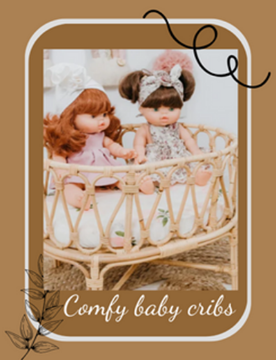
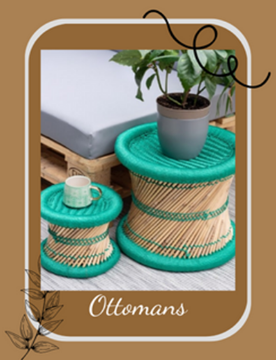
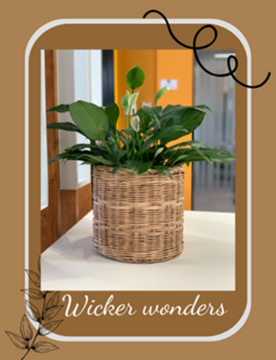
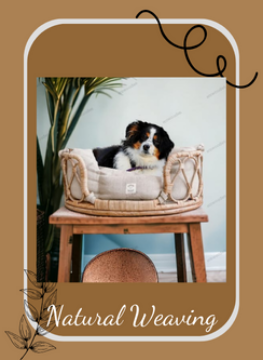
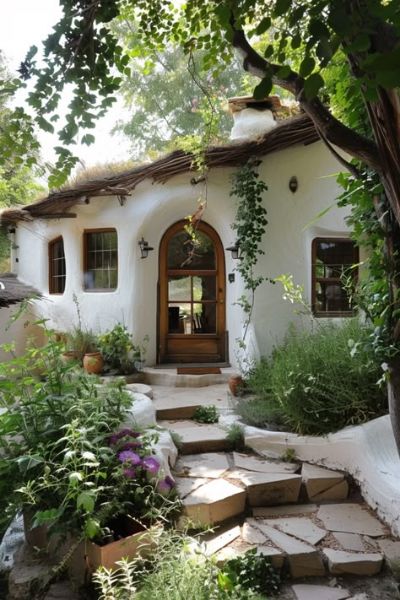






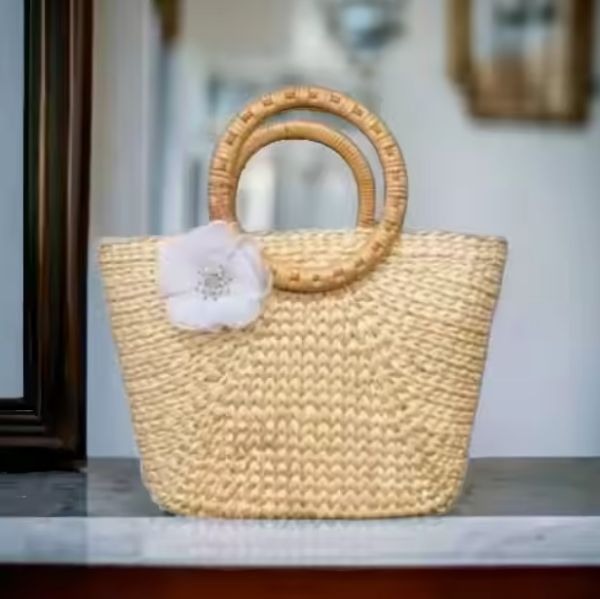






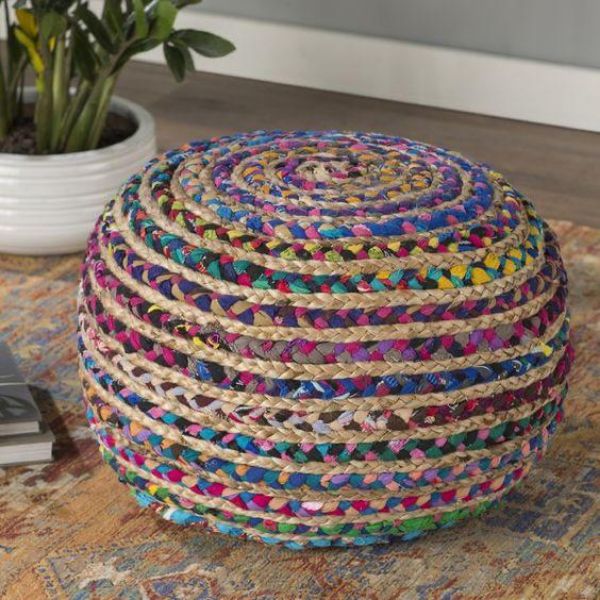
.jpeg)
.jpeg)

.jpeg)
